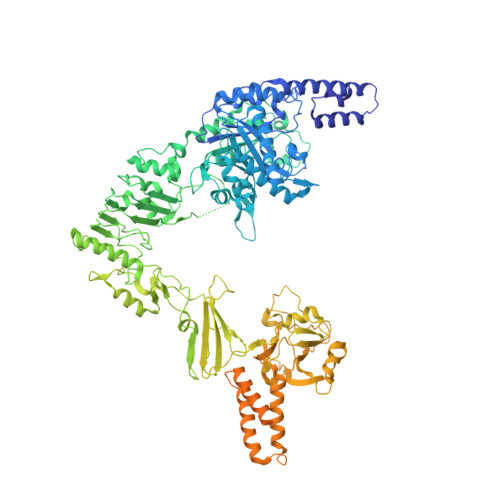Structural basis for the recognition of complex-type N-glycans by Endoglycosidase S.
Trastoy, B., Klontz, E., Orwenyo, J., Marina, A., Wang, L.X., Sundberg, E.J., Guerin, M.E.(2018) Nat Commun 9: 1874-1874
- PubMed: 29760474
- DOI: https://doi.org/10.1038/s41467-018-04300-x
- Primary Citation of Related Structures:
6EN3 - PubMed Abstract:
Endoglycosidase S (EndoS) is a bacterial endo-β-N-acetylglucosaminidase that specifically catalyzes the hydrolysis of the β-1,4 linkage between the first two N-acetylglucosamine residues of the biantennary complex-type N-linked glycans of IgG Fc regions. It is used for the chemoenzymatic synthesis of homogeneously glycosylated antibodies with improved therapeutic properties, but the molecular basis for its substrate specificity is unknown. Here, we report the crystal structure of the full-length EndoS in complex with its oligosaccharide G2 product. The glycoside hydrolase domain contains two well-defined asymmetric grooves that accommodate the complex-type N-linked glycan antennae near the active site. Several loops shape the glycan binding site, thereby governing the strict substrate specificity of EndoS. Comparing the arrangement of these loops within EndoS and related endoglycosidases, reveals distinct-binding site architectures that correlate with the respective glycan specificities, providing a basis for the bioengineering of endoglycosidases to tailor the chemoenzymatic synthesis of monoclonal antibodies.
- Structural Biology Unit, CIC bioGUNE, Bizkaia Technology Park, 48160, Derio, Spain.
Organizational Affiliation:



















